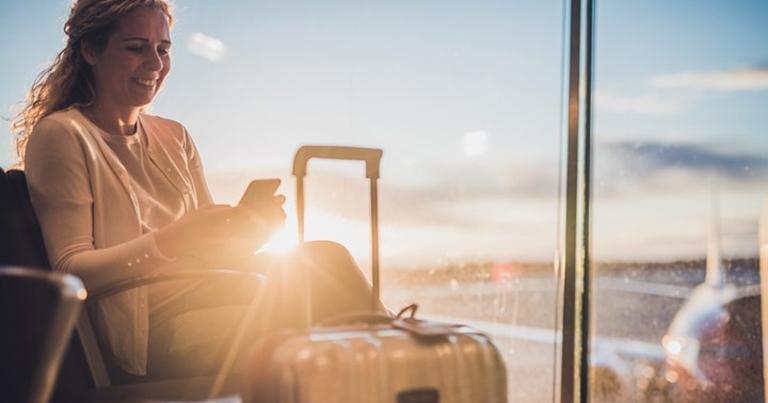The following article was published by Future Travel Experience
The SITA 2022 Passenger IT Insights reveals an increase in passenger use of mobile devices and the adoption of self-service gates.

The SITA 2022 Passenger IT Insights research has highlighted that passengers are further embracing mobile and touchless technologies to make the journey as convenient and seamless as possible.
The survey reveals an increase in passenger use of mobile devices for booking, on board the airplane, and for bag collection in Q1 2022 compared to Q1 2020, while automated gates saw increases in adoption for identity control, boarding, and border control.
The results clearly reflect the accelerated digitalisation of air travel since the outbreak of the pandemic and passengers’ willingness to adopt technologies. However, health verification is a pain point that has slowed end-to-end automation. In Q1 2022, despite some uptake of technology at this stage, over half of passengers were still doing their own research on health verification requirements and manually submitting documentation. SITA’s research also finds reduced technology adoption in the early stages of the journey (check-in, bag tag, and bag drop) in favour of manual processing. Uncertainty about health requirements and travel rules has likely led travellers to seek more staff interaction when starting the journey.
The survey shows that the more technology there is during travel, the happier passengers are. As many as 87% of passengers have positive emotions about identity control, up 11% from 2016; the same is true for 84% of passengers about bag collection (up 9%). These are also the areas where technology adoption has risen the most, driven by mobile and automated gates, with half of passengers now additionally receiving real-time information at bag collection on time until delivery.
Asked about comfort levels with biometric identification throughout the journey, passengers scored an average of almost 7.3 out of 10 (with 10 representing most comfortable), most likely reflecting their desire for ease of travel moving forward from the pandemic.
David Lavorel, CEO, SITA, said: “It is exciting to see demand recovering and even surpassing pre-pandemic levels, not just for leisure but also for business travel. We are seeing that the technology-driven end-to-end passenger journey is becoming a reality, as the air transport community continues to digitalize its travel processes and industry operations, accelerated by the pandemic. We are also seeing that passengers are increasingly embracing mobile and touchless technologies across the journey, to make their travel as convenient and seamless as possible. The use of IT to help drive and sustain the recovery of air travel is vital today, and it is also critical to the post-pandemic digital journey of tomorrow.”
As that recovery gathers pace, SITA’s Passenger IT Insights survey says that passengers intend to fly more from 2023 onwards than they did prior to the pandemic, anticipating averages of 2.93 flights per passenger per year for business, and 3.90 for leisure. When weighing up whether to fly or not, the main barriers are ticket prices, health risks, and geopolitical risks.
Passengers also consider sustainability before they choose to fly. Around half of passengers would value airports and airlines putting in place new IT solutions to support sustainability (such as monitoring airport environmental performance to reduce emissions and flight path optimisation to reduce fuel burn). On the airport front, this initiative has overtaken green airport infrastructure for most valued since Q1 2020, suggesting all eyes are on the promises of technology to support concrete reductions to the environmental impacts of the industry.
Almost all passengers would pay on average 11% of their ticket price to offset carbon emissions from their flight. Asked if the air transport industry is doing enough to become more sustainable, more than half of passengers either think not, or don’t know, suggesting there is room for industry improvement in communicating sustainability initiatives and actions.
Article originally published here:
SITA research shows increased passenger demand for mobile and touchless technologies
from Future Travel Experience https://ift.tt/a5ZheX9
Comments
Post a Comment